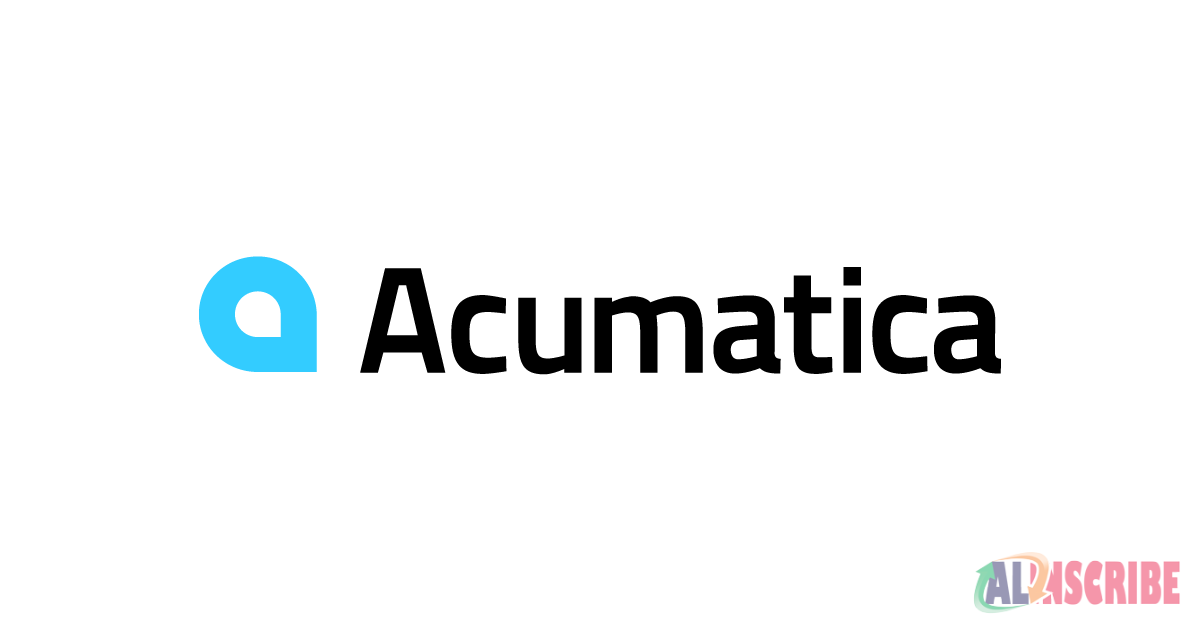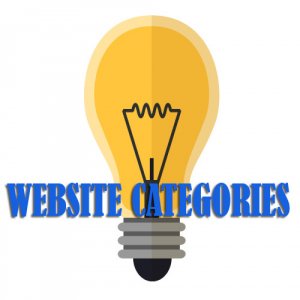A Guide To Acumatica CRM And A Comparison With Tactic ERP & CRM

In this 21st century modern business demands sophisticated tools to manage both internal operations and crucial customer relationships. This article dives into Acumatica, a powerful cloud-based platform, exploring its dual prowess as a robust Customer Relationship Management (CRM) solution. We'll uncover how Acumatica's integrated design empowers businesses to not only streamline core processes like finance and inventory but also to elevate customer engagement through automated sales workflows, targeted marketing campaigns, and a unified view of every customer interaction.
Beyond a deep dive into Acumatica's capabilities, this guide offers a unique comparative analysis with Tactic ERP & CRM. We'll meticulously examine the distinct features, strengths, and ideal use cases for each platform, providing a clear understanding of their respective value propositions. By dissecting their functionalities, scalability, and industry fit, this comparison aims to equip you with the knowledge necessary to confidently select the solution that best aligns with your organization's specific operational demands and strategic customer management goals.
Introduction to Acumatica CRM
Acumatica CRM is a robust, cloud-based solution designed to help businesses cultivate stronger customer relationships and drive sales growth. Far more than just contact management, it provides a unified platform that integrates sales, marketing, and customer service functionalities. This holistic approach offers a 360-degree view of every customer, consolidating all interactions, communications, and transactional data in one accessible location. From initial lead capture and nurturing to opportunity management, quoting, and post-sales support, Acumatica CRM streamlines the entire customer journey, ensuring no detail is overlooked.
Key capabilities include automated workflows for lead assignment and follow-ups, comprehensive marketing campaign management with ROI tracking, and an efficient case management system for customer support. Its seamless integration with Acumatica's broader ERP modules means that financial data, inventory, and project information are all connected to customer records. This powerful synergy enables sales teams to generate accurate quotes linked to real-time inventory, while customer service can access complete order histories. Ultimately, Acumatica CRM empowers businesses to enhance customer satisfaction, boost sales efficiency, and make data-driven decisions that fuel sustained growth.

Core features of Acumatica CRM
Acumatica CRM distinguishes itself through a suite of core features designed to enhance every stage of the customer lifecycle. These features work cohesively to provide businesses with a unified, real-time view of their customer interactions, facilitating improved efficiency, deeper insights, and stronger relationships.
1. Lead Management
Acumatica CRM provides comprehensive tools for capturing, nurturing, and qualifying leads from diverse sources, including web forms, trade shows, and manual entry. It allows businesses to define custom lead statuses and workflows, enabling systematic progression of leads through the sales funnel. Automated lead assignment rules ensure that leads are routed to the most appropriate sales representatives based on criteria such as territory, product interest, or lead source. This feature minimizes response times, prevents leads from falling through the cracks, and ensures that every potential customer receives timely and personalized attention. Detailed tracking of all activities associated with a lead - from initial contact to follow-ups and logged communications - provides a complete historical record, empowering sales teams to convert prospects into opportunities more effectively.
2. Opportunity Management
Once a lead is qualified, Acumatica CRM seamlessly transitions it into an opportunity, offering a structured framework for managing potential sales deals. This feature enables sales teams to track the progress of each opportunity through configurable stages, such as qualification, proposal, negotiation, and closed/won/lost. Users can associate multiple quotes, sales orders, and activities directly with an opportunity, providing a holistic view of the deal's status and associated financials. Collaboration tools within opportunity management allow team members to share insights, assign tasks, and streamline the sales process, ensuring everyone is aligned on the path to closing the deal. This structured approach helps in forecasting sales, identifying bottlenecks, and optimizing the sales pipeline.
3. Sales Automation
Acumatica CRM's sales automation capabilities are designed to boost sales efficiency and reduce administrative burdens. This includes automated workflows for various sales activities, such as sending follow-up emails, creating tasks, and updating opportunity stages. The system can automatically link sales orders and quotes to opportunities, eliminating manual data entry and ensuring data accuracy across departments. Features like email templates with consistent branding, automated tracking of email responses, and the ability to convert business card contacts using AI-powered mobile image recognition further enhance productivity. By automating repetitive tasks, sales professionals can dedicate more time to building relationships and closing deals, ultimately leading to higher conversion rates and increased revenue.
4. Integrated Marketing
The integrated marketing feature in Acumatica CRM connects marketing efforts directly to sales outcomes. It allows businesses to manage marketing campaigns from inception to analysis, capturing leads from various sources and segmenting contacts into dynamic lists based on user-defined criteria like purchase history or demographics. Users can create, launch, and track email campaigns, newsletters, and promotions using pre-defined templates, ensuring consistent messaging and branding. This feature also provides tools to measure campaign performance, including lead response rates and profitability, by integrating marketing activities with financial data. This holistic view enables businesses to optimize their marketing spend, identify the most effective channels, and nurture prospects more strategically.
5. Customer Service & Support Automation
Acumatica CRM provides robust tools for managing customer service and support, ensuring prompt and effective resolution of customer inquiries and issues. The case management system allows support agents to create, assign, and escalate cases based on predefined policies and workflows. All customer interactions, including phone calls, emails, and web inquiries, are centralized within the system, providing a complete history for each customer. This feature also includes a customer self-service portal, where customers can access account information, track support cases, and find answers to frequently asked questions 24/7, reducing the burden on support staff. By automating routine tasks and providing comprehensive customer data, Acumatica helps businesses improve response times, enhance customer satisfaction, and lower support costs.
6. Reporting and Analytics
Acumatica CRM offers powerful reporting and analytics tools that provide real-time insights into customer data, sales performance, and marketing effectiveness. Users can access a variety of out-of-the-box reports or create customized dashboards and reports to visualize key performance indicators (KPIs) relevant to their specific roles or departments. The ability to drill down into detailed transactions allows for in-depth analysis of sales forecasts, campaign ROI, lead conversion rates, and customer service metrics. This data-driven approach empowers businesses to identify trends, pinpoint areas for improvement, and make informed strategic decisions to optimize their CRM processes and drive growth. The unified database ensures that all reports reflect accurate and up-to-the-minute information from across the entire ERP system.
7. Seamless Integration with ERP
One of Acumatica CRM's most significant advantages is its seamless and native integration with the broader Acumatica ERP system. This eliminates data silos and ensures a "single version of the truth" across all departments, including finance, inventory, and project management. For example, sales teams can generate quotes that reflect real-time inventory availability and pricing, and once a deal is closed, a sales order can be automatically created and passed to the finance department for invoicing. This deep integration streamlines workflows, reduces manual data entry and errors, and provides a 360-degree view of the customer that incorporates not just their interactions but also their complete transactional history. This unified approach significantly enhances operational efficiency and decision-making capabilities.
Creating and Managing Leads in Acumatica provides a visual guide on how to handle leads within the Acumatica platform, which is directly relevant to the Lead Management feature discussed.
Pros and Cons of Acumatica CRM
| Pros | Cons |
|
|
Introduction to Tactic ERP & CRM
Tactic ERP & CRM is a comprehensive software solution that seamlessly integrates Enterprise Resource Planning (ERP) and Customer Relationship Management (CRM) functionalities, offering businesses a unified platform for operational efficiency and enhanced customer engagement. While its ERP capabilities streamline core business processes like finance, inventory, and supply chain, Tactic's true strength for many lies in its robust CRM module. This powerful component empowers organizations to cultivate and manage customer relationships with unprecedented precision.
The CRM aspect of Tactic goes beyond simple contact management, providing tools for lead tracking, sales pipeline management, marketing automation, and insightful customer service. It centralizes all customer interactions, ensuring a 360-degree view of every client, from initial inquiry to post-sales support. By leveraging Tactic's CRM, businesses can personalize communications, anticipate customer needs, optimize sales strategies, and ultimately foster stronger, more profitable, and lasting relationships. This customer-centric approach is vital for growth in today's competitive landscape.

Core CRM features of Tactic ERP & CRM
Tactic ERP & CRM offers a range of modules designed to streamline various business operations, with a strong focus on customer relationship management.
Third-Party Management
The Third-Party module in Tactic ERP & CRM provides robust tools for managing all external entities your business interacts with. It allows you to categorize these entities as new customers, vendors, or prospects, and the system automatically assigns unique codes upon creation, which you can later adjust. For B2B companies, it simplifies adding businesses as customers, even letting you include their logos for quick identification. Managing their status is a breeze, requiring just a single click. You can also customize language preferences, define discounts, and set prices, and even add extra fields to capture diverse customer information.
Sales and Quoting
The Quotation module simplifies the creation of commercial proposals. As you generate proposals, Tactic automatically updates your agenda, making tracking easy. You can manage the proposal lifecycle by changing its status (draft, validated, signed, refused) and even reopen signed or refused proposals with a single click. The module also supports quotation export and online signatures.
Following a successful proposal, the Sales Order module allows you to create detailed sales orders with all vital information, including customer contacts, product quantities, pricing, and terms. These orders can be directly converted into invoices, streamlining your billing process. While sales orders can be managed through their lifecycle, it's important to note that validated sales orders cannot be deleted.
Post-Sales and Support
The Shipment module enhances the post-sales experience by enabling you to create and track shipments directly from invoices within the CRM. This provides a centralized view and the flexibility to reopen shipments as needed.
For urgent customer needs, the Intervention module is key. It facilitates the quick creation and management of urgent requests from valued customers or members, allowing for easy input of essential information and attachment of relevant files.
The Tickets module is your comprehensive tool for tracking all customer queries and issues throughout their journey. Customers can create tickets through various interfaces, and your team can efficiently manage them from this dedicated module.
Knowledge and Contracts
The Knowledgebase module centralizes critical information across your organization, significantly reducing the time needed to resolve internal and customer queries. You can link knowledge base articles directly to tickets, providing customers with self-service options.
Finally, the Contract module simplifies the management of business contracts. You can easily create and modify contracts in draft form, but once validated, they become immutable. This module also supports the management of subscriptions linked to customers and vendors, and even handles quotations from this central hub.
Partnership Management
The Partnership Management module empowers businesses to efficiently manage relationships with customers, vendors, and other third parties. It streamlines the creation of new partnerships and allows for their validation, approval, or termination with just a few clicks.
Pros and Cons of Tactic ERP & CRM
| Pros | Cons |
|
|
Acumatica CRM vs. Tactic ERP & CRM
| Best Use For | Acumatica | Tactic ERP & CRM |
|---|---|---|
| Business Size | Startups, small, medium and large companies | Startups, small, medium and large companies - size is no bar for Tactic ERP & CRM |
| Business Type | Acumatica is the best for both B2B and B2C companies | Tactic is suitable for both B2B, B2C companies |
| Industries | Manufacturing, Distribution, Retail, Service Industries, construction are the industires that are the most benefitted by Acumatica. | Tactic is a suitable choice for every industry |
| Core Features | Acumatica | Tactic ERP & CRM |
| Human Resource Management (HRM) | ||
| Customer Relationship Management (CRM) | ||
| Vendor Relationship Management (VRM) | ||
| Financial Modules (Accounting/Treasury) | ||
| Product Management (PM) | ||
| Projects/Collaborative work Management | ||
| Electronic Content Management (ECM) | ||
| HRM Modules | Acumatica | Tactic ERP & CRM |
| User module | ||
| Members Module | ||
| Leave request management Module | ||
| Expense Reports Module | ||
| Recruitment Module | ||
| CRM Modules | Acumatica | Tactic ERP & CRM |
| Third Party module | ||
| Sales Order Module | ||
| Shipment Module | ||
| Contract Module | ||
| Intervention Module | ||
| Tickets Module | ||
| Knowledge management Module | ||
| Partnership management Module | ||
| VRM Modules | Acumatica | Tactic ERP & CRM |
| Vendor Module | ||
| Vendor Commercial Proposal Module | ||
| Reception | ||
| Incoterms Module | ||
| Financial Modules | Acumatica | Tactic ERP & CRM |
| Customer Invoice Module | ||
| Vendor invoice module | ||
| Tax Module | ||
| Salaries Module | ||
| Loans Module | ||
| Donation Module | ||
| Bank and cash module | ||
| Payment by credit transfer Module | ||
| Payments by Direct Debit Module | ||
| Margin Module | ||
| Accounting simplified Module | ||
| Accounting double entry Module | ||
| Product Management (PM) | Acumatica | Tactic ERP & CRM |
| Product Module | ||
| Services Module | ||
| Stocks Module | ||
| Product Lots Module | ||
| Product Variants Module | ||
| Bills of Material Module | ||
| Manufacturing Order Module | ||
| Projects/Collaborative work Management | Acumatica | Tactic ERP & CRM |
| Projects or Leads Module | ||
| Events/Agenda Module | ||
| Resources Module | ||
| Event Organization | ||
| Electronic Content Management (ECM) | Acumatica | Tactic ERP & CRM |
| DMS/ECM Module | ||
| Miscellaneous Modules | Acumatica | Tactic ERP & CRM |
| Tags and Categories Module | ||
| Multicurrency Module | ||
| Bookmarks & Shortcuts Module | ||
| Barcode Module | ||
| Inter-modules Workflow Module | ||
| Data Imports module | ||
| Data Exports Module | ||
| Poll, Survey or Vote Module | ||
| Website Module | ||
| Point Of Sale (TakePOS) | ||
| Social Networks Module | ||
| Notification Module | ||
| Mass Emailing Module | ||
| Email Collector Module | ||
| Web services REST API Module | ||
| Web service SOAP API Module | ||
| LDAP Module | ||
| Oauth Module | ||
| External Site Module | ||
| FTP module | ||
| GeoIPMaxmind Module | ||
| PayBox Module | ||
| Paypal Module | ||
| Stripe Module | ||
| ClickToDial module | ||
| One Click Printing | ||
| Receipt printers Module | ||
| Mailman and SPIP Module | ||
| Scheduled jobs Module | ||
| Specifications | Acumatica | Tactic ERP & CRM |
| Deployment | Acumatica is available as a SaaS and an on-premises software as well. | Tactic is available as a SaaS and an on-premises software as well. And the best thing about is that the users do not have to opt for different versions of Tactic for that. |
| Supported Device | Any smart device with an internet connection | Any smart device with an internet connection |
| Supported Platforms | Any browser | Tactic can be accessed via any secure browser |
| Support and Training | Acumatica | Tactic ERP & CRM |
| Support | Acumatica employs a multi-layered support model designed to ensure customers receive assistance when and how they need it. | Tactic offers support through email, call, chat and a remote assistance |
| Training | Acumatica offers a comprehensive array of training resources, emphasizing self-paced learning, structured courses, and hands-on experience, primarily through Acumatica Open University. | Tactic wiki, tutorial videos, One-on-one training are offered by Tactic |
| Security | Acumatica | Tactic ERP & CRM |
| Security Features | Multi-level Security, Public or private hosting options, Role-based access, Screen-level security, Field-level security, Record-level security, Workflow security, Data input and accessibility valid only through Acumatica business logic, Complete audit history, Web Application security solution, Single-Sign-On (SSO), Multi-Factor Authentication (MFA), Advanced Encryption Standard (AES), TLS 1.2 encryption algorithms, User Login Accounts, Cyber Security, GDPR Compliant, User account types (UI, API, Unrestricted), User Access Rights, Security Preferences, Password Policies, IP Filters, Device and location tracking, VPN support (for remote access scenarios), HTTPS (for data in transit), Timeout Settings, Cookies Settings, Physical security (for SaaS deployments), Network security (firewalls, intrusion detection systems), Application security (secure coding practices, vulnerability testing), Data at rest encryption, Data in transit encryption, Centralized Compliance Management, Automated Workflows (for security processes), Document Control and Versioning (for compliance documents), Audit Trail and Compliance Reporting, Risk Assessment and Mitigation, Regulatory Framework Alignment, Real-time Monitoring and Notifications, Automatic Backups of Information and Retrieval System, Database Encryption, SSL/TLS Encryption, SFTP Encryption, Patching and Updates, Intrusion Detection Systems (with AI monitoring) | Regular updates, 2FA (2 Factor Authentication), SSL (Encrypted Data Communication between client and server), Backups / Disaster Recovery, Database Security, Password Security, Staff Access, System Security, Physical Security, Credit Card Safety, Data Encryption, Network defense, DOS and Brute force rate Mitigation, Automatic Backups,PHP safe_mode, SQL injection protection, XSS injection protection (cross site scripting), SSRF protection, CSRF (Cross Site Request Forgery) protection, Centralized entry code to check permissions, Optional CAPTCHA in log-in page to restrict robots, Anti-virus check-up sessions on every uploaded file. |
| Framework | Acumatica | Tactic ERP & CRM |
| Programming Language | Acumatica primarily uses C# and built on the .NET framework | Tactic ERP & CRM primarily uses PHP |
| Technology | Acumatica | Tactic ERP & CRM |
| Integration with E-commerce Platforms | Acumatica can be easily integrated with your e-commerce website and platform. | Tactic ERP & CRM can be integrated with E-commerce platforms via API very conveniently. |
| Integration with IoT Devices | Acumatica is promotes seamless integration with IoT devices. | Tactic ERP & CRM can be integrated with IoT devices. |
| Artificial Intelligence (AI) and Machine Learning (ML) Capabilities | Acumatica is known to actively integrating and utimizing AI and ML capabilities to enhance performance even more. | Tactic ERP & CRM is looking forward to establish AI/ML within the software in near future. |
| Low-Code/No-Code Development Platform | Acumatica is a no-code, low-code platform. Users and partners can make simple application changes, create custom fields, modify screens, and update workflows using intuitive drag-and-drop interfaces and configuration tools, often without needing detailed programming knowledge. | Tactic ERP & CRM doesn't require any kind of programming for minimal changes. The users can easily add, delete any parameters, attributes directly from the setup, which makes it a no-code platform. |
| Sustainability Tracking and Reporting | Available | Not Available |
| Compliance Management Features | Available | A wide range of Compliance Management Features are available in Tactic. |
| Risk Management Features | Role-Based Security and Access Control, Segregation of Duties (SOD), Audit Trails, Workflow Automation, Financial Controls, Data Security | The users are allowed to take back-up of their software data via admin access. Any other risk management is performed by the parent company. |
| Service Level Agreements (SLAs) for Cloud Offerings | Acumatica offers Service Level Agreements (SLAs) for Cloud Offerings | Tactic ERP & CRM offers Service Level Agreements (SLAs) for Cloud Offerings |
| User Roles and Permissions Management | Acumatica allows the users to add roles and responsibility to limit access | Tactic ERP & CRM allows the users to add roles and responsibility to limit access |
| Search Functionality | Search functionality is available | Search functionality is available |
| Collaboration Tools | Collaboration tools are available | Collaboration tools are available |
| Document Management Integration | Not Available | Document management integration is available. The users can add and manage their document tree within the software very easily |
| Pricing | Acumatica | Tactic ERP & CRM |
| Basic Plan | Annual subscription for a basic system (6-10 users) can range from $30,000 to $50,000 for SaaS and $65,000 for purchase | $9/Month/User |
| SME Plan | Between $50,000 and $75,000 annually | $19/Month/User |
| Enterprise Plan | $10,000+ per month | $27/Month/User |
| Free Trial | Not Available | Available |
| Freemium Version | Not Available | Available |

Analysis and conclusion
Acumatica and Tactic ERP & CRM both aim to be comprehensive business solutions, but they approach the integration of ERP and CRM functionalities with distinct philosophies. Acumatica, a well-established cloud ERP, offers a robust CRM module that is natively integrated, meaning sales, marketing, and customer service data seamlessly flows across its core financial and operational modules. This provides a unified 360-degree customer view, allowing for real-time insights into customer profitability, order history, and support cases directly within the ERP context. A key advantage of Acumatica's CRM is its flexibility and customization capabilities, enabling businesses to mould the system to their precise needs, though this often comes with a steeper learning curve and potentially higher implementation costs. Its cloud-native design ensures accessibility from anywhere, supporting modern, agile workforces.
Tactic ERP & CRM, while also presenting itself as an all-in-one solution, places a slightly stronger emphasis on the breadth of its modular offerings, including strong CRM aspects alongside HR, product, and project management. From a CRM perspective, Tactic likely provides robust contact management, lead nurturing, and sales pipeline tools, similar to Acumatica, but it may shine in specific areas like streamlined communication and collaboration features that cater to rapid interaction and project-centric customer engagements. While Acumatica's CRM is deeply embedded in its ERP, Tactic's approach might prioritize user-friendliness and a quicker setup for its CRM components, making it appealing for businesses that need immediate impact on their customer-facing operations. However, the sheer number of modules in Tactic could also mean a less specialized depth in certain CRM functionalities compared to Acumatica's focused development.
Ultimately, the choice hinges on a business's primary pain points and priorities. Acumatica offers a proven, deeply integrated system where CRM benefits are derived from its powerful ERP foundation, ideal for organizations requiring comprehensive financial and operational linkages. On the other hand, Tactic ERP & CRM, by emphasizing a broader suite of modules and potentially offering a more intuitive CRM experience out-of-the-box, could be a slightly better choice for businesses that prioritize quick adoption, immediate enhancement of their customer interactions across various departments, and a unified platform that directly addresses a wide array of business functions beyond just traditional ERP. Its potential focus on practical, multi-module tools and frontal applications might empower teams to engage with customers more directly and efficiently from day one, even if the underlying ERP integration isn't as deeply ingrained as Acumatica's.
Article Comments
Similar Articles
Articles Search
Sponsor
There are zero sub-categories in this parent category.
There are zero sub-categories in this parent category.
There are zero sub-categories in this parent category.
















